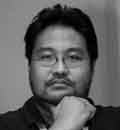IN usual depictions of the 1521 Battle of Mactan in the past, our bare-chested ancestors were represented with clean bodies, notwithstanding that in the Antonio Pigafetta account of the Magellan expedition, the warriors of the Visayas were described as painted or tattooed. That is why in recent years and most especially during the Quincentennial Art Competition where I sat as one of the preliminary judges, I was glad to see more accurate depictions of the bagani who should be depicted with their batek (tattoos) as "batikan."
But what did the designs of our ancestors' tattoos look like? One source could be the photographs of the indigenous warriors in the early 20th century taken by colonial photographers for documentation. The practice of having tattooed warriors is fading among many ethnic groups. In Kalinga, the last living person who tattooed actual warriors in the past was the 104-year-old Whang-od Oggay. We assume that in some way, the designs of the tattoos went all the way back to our ancestors.
Continue reading with one of these options:
Ad-free access
P 80 per month
(billed annually at P 960)
- Unlimited ad-free access to website articles
- Limited offer: Subscribe today and get digital edition access for free (accessible with up to 3 devices)


